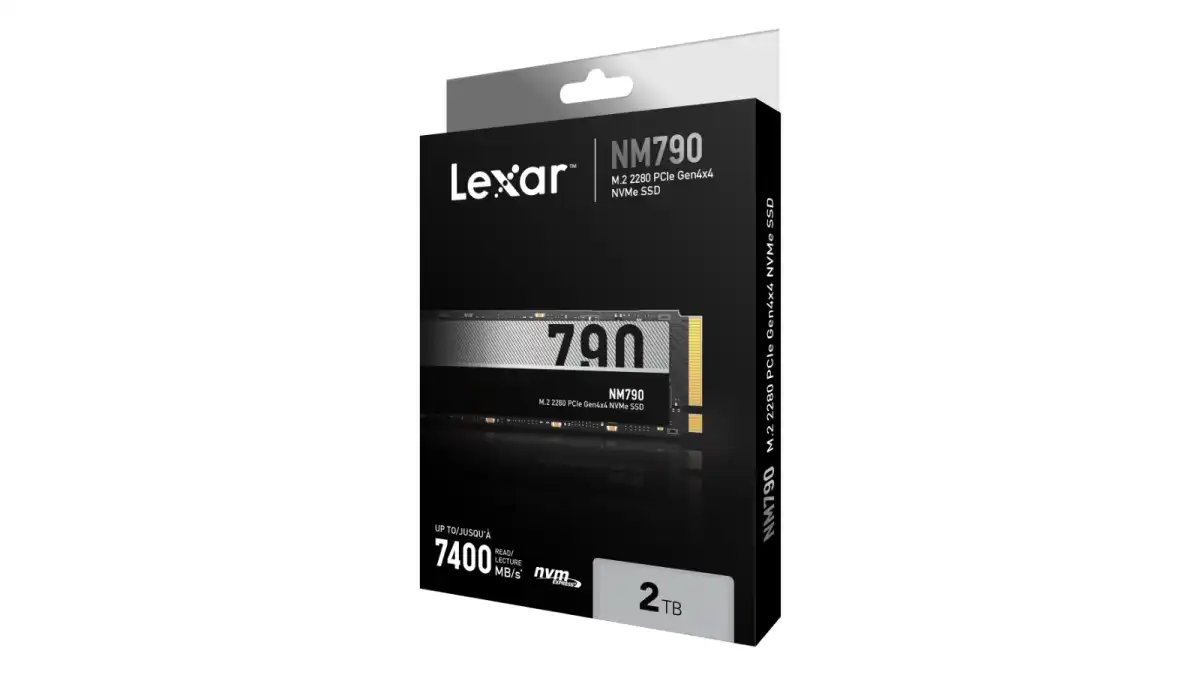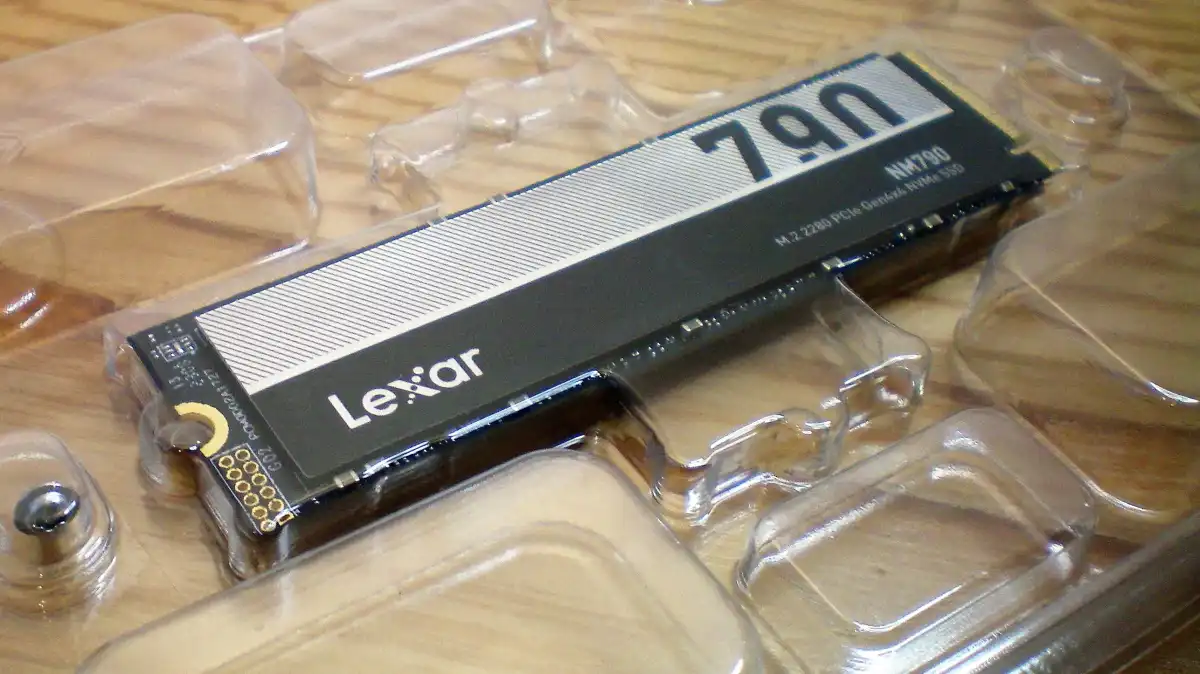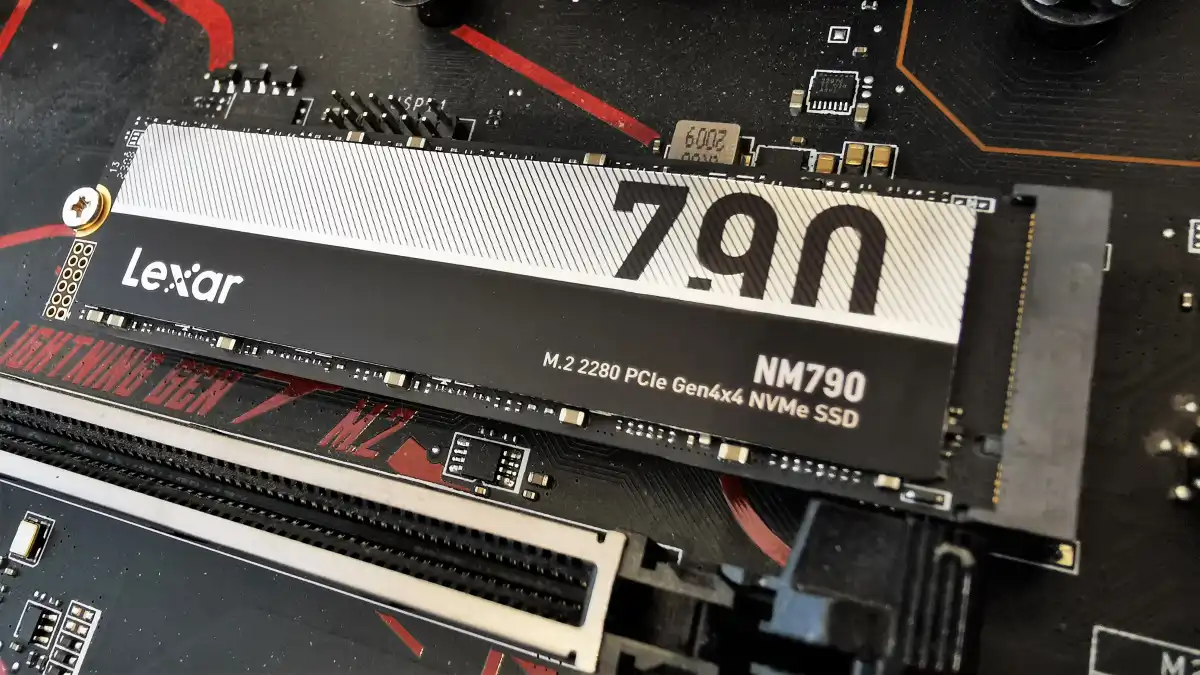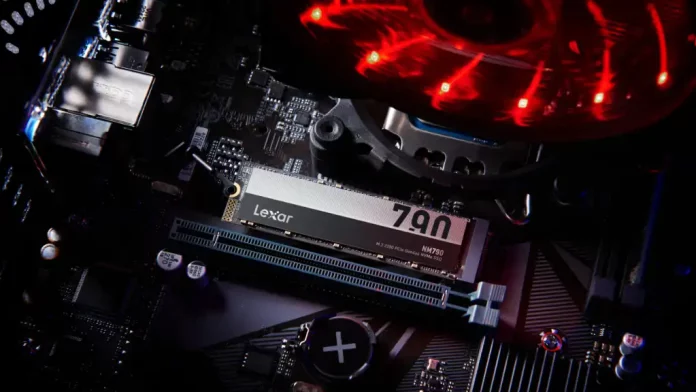The world of NAND storage is on the verge of unknown territory, with capacity and performance expected to skyrocket in the near future.
With Gen 5 drives dominating in terms of performance but being out of many customers’ price ranges, the market for Gen 4 drives is going to heat up. And, if the new Lexar NM790 is any indication, prices in the NAND storage market are falling and performance of even low-cost drives is improving.
All of this is wonderful news for consumers, but is now the time to invest in a PCIe Gen4 NVMe drive?
Design & build
- Simple design
- No heatsink option
We’ve discussed NVMe drive design and how, for the most part, the 2280 M.2 form factor has all but eradicated what little variance there was earlier.
As a result, it should come as no surprise that the NM790 has a simple design with the NAND modules and controller on the upper surface, which is only covered by a thin sticker.
Read also : New Upgrade for Acer 2023
The underbelly features no visible components, implying that the NM790 was meant to be as basic and dependable as possible.

This design, without a heatsink, will easily fit into a laptop, PC, or PlayStation 5 – however if you want to put it in the console, you’ll have to defy Sony’s recommendation to use SSDs with a heatsink.
This is one drive where you might be prepared to accept that risk: as we’ll see later, the power consumption of this drive is far lower than that of some other Gen 4 NVMe drives, so it doesn’t create as much heat.
Specs & features
- Caps at 2TB storage
- No hardware encyrption
The Lexar NM790 is available in just three capacities: 512GB, 1TB, and 2TB. The lack of a 4TB drive is a letdown, and we hope Lexar provides this, as well as an 8TB drive, in the future.
To get the most out of this drive, you’ll need an NVMe 2.0 M.2(2280) slot that supports PCIe Gen 4 x4 operations. It will operate in a Gen 3 slot, but not at the performance levels we saw in our tests.
Previously, we’d recommend that individuals having PCIe Gen 3 slots purchase drives optimized for that interface, but with items like the NM790, that advise may need to be updated. Because a Gen 4 drive will still perform well, it has more potential if you replace your system, and Gen 3 drives aren’t significantly cheaper.

What makes this drive superior to prior designs is that it supports HMB 3.0 and Dynamic SLC Caching, allowing it to attain and sustain high levels of performance using the host system’s RAM and the ability to dynamically convert NAND to cache memory.
It is feasible to maintain write rates for huge files without revealing the underlying speed of the MLC NAND on the drives to those with plenty of RAM and enough of empty space on the disk. An further benefit for the drive manufacturer is that this eliminates the need of pricey DRAM for caching, which uses more power.
The NM790 shows how far module design has come in the past couple of years
What Lexar does not reveal is the controller on this drive, but a few other clues, such as power consumption, suggest that it is not a Phison E18 or a derivation of that design, but something designed in-house.
When we first saw Gen 4 drives, we were impressed by their performance, but power consumption and, by extension, heat generation were frequently a concern.
The NM790 demonstrates how far module design has progressed in the last several years, since it utilizes nearly half the power of Lexar’s earlier NM800PRO design with a 6W overhead, using just 3.5W.
In comparison, the Samsung 990 Pro 2TB requires up to 5.8W, the Kioxia Exceria Pro requires up to 8.9W, and the Kingston KC3000 2TB requires a concerning 9.9W.
While the amount of voltage in all of these drives isn’t something that customers with a mains-connected desktop machine would be concerned about, the NM790 could be a good alternative for individuals using a laptop. Or it would be if it included one function that Lexar opted not to include.

According to our understanding, this disk does not enable hardware encryption. While software solutions like as BitLocker may be used to encrypt the contents of the NM790, hardware encryption is the preferred approach for those seeking the maximum level of protection.
Security is one of the few areas where the NM790 may not be appropriate for a certain environment, but for the vast majority of users who do not encrypt everything, it is a non-issue.
Performance
- Up to 7400MB/s sequential read
- Up to 6500MB/s sequential write
- Great longevity
As with many NVMe systems, the manufacturers advertise slightly variable speeds across the capacity range. The 512GB variant is only rated for 7200MB/s sequential reads and 4400MB/s sequential writes. Whereas the 1TB and 2TB drives have the same sequential reading speed of 7400MB/s and sequential write speed of 6500MB/s.
We’d avoid the 512GB choice for this reason, as well as the relatively low price of the 1TB storage.
All of our testing was done on the 2TB drive, which lived up to its reputation as a very contemporary and effective NVMe architecture.
The TBW of these drives grows with capacity, with the 512GB delivering 500TB, the 1TB offering 1000TB, and the 2TB offering 1500TB. I’m not sure why the 2TB drive isn’t rated for 2000TB TBW, but 1500TB is sufficient. To put it in context, writing the 50GB contents of the Blu-ray disc to the 1TB disk every day should be achievable for 20,000 days, or approximately 55 years. Even if you write 1TB every day, the 2TB disk should survive at least five years before the NAND is depleted.
Using the 2TB drive as an example, the NM790 has a higher TBW than the Samsung 990 Pro, nearly double the TBW of the Kioxia Exceria Pro, and just 100TB less than the Kingston KC3000.
In terms of performance, it’s better to compare it to inexpensive drives like the Crucial P5 Plus and WD Black SN770, which cost around the same. However, in several benchmarks, this drive outperforms premium branded ones, particularly in “real world” tests.
Using CrystalDiskMark 8.04, the NM790 performs well in sequential reads and writes, is adequate in random reads, but falls short in random writes. Using the Real World profile, the NM790 has one of the finest sequential read performances we’ve encountered, with decent write performance.
Using the ATTO Disk Benchmark, read speeds are towards the top of the spectrum, while write speeds are just marginally slower than premium offerings. The PCMark10 Quick Storage benchmark favors the Samsung 990 Pro for a variety of reasons, although the NM790 outperforms the Seagate FireCuda 530.
Considering that there are many Gen 4 drives that the NM790 is faster than, this drive is shockingly cheap
Our last graph depicts maximum power use, which is essential for laptop users who rely on battery power. It easily wins this test, consuming only 3.5W at peak.
Overall, considering the price of this module, the results are typically remarkable, and unless you want insane IOPs or PCIe Gen 5, this is a solid pick and fantastic value for money.
Price & availability
Given that the NM790 outperforms many Gen 4 drives, premium price would be expected, yet this drive is astonishingly inexpensive.
At the time of writing, the 512GB model is £44.00 on Amazon, the 1TB model is £64.99, and the 2TB is only £119.99, with comparable selections on eBuyer.
Pricing in the United States is likely to be ‘about the same’ when the NM790 is released in June.

Even though it performs similarly to the Samsung 990 Pro and Seagate FireCuda 530 in a desktop system, it is significantly less expensive. The WD Black SN770 is less expensive, however it only has a read speed of 5150 MB/s.
The Crucial P5 Pro costs about the same as the NM790, but has slower read and write speeds and a lower TBW.
For additional possibilities, see our complete list of the top SSDs.
Verdict
Lexar joins Samsung, Crucial, Seagate, and Kingston in producing high-performance NVMe modules with good specs with the NM790 design and pricing range.
The lower power consumption of this disk makes it an obvious choice for laptop upgrades.
There are just two disappointments: the lack of hardware encryption and the absence of a 4TB variant at launch. Aside from those two concerns, this is a good option for high-speed storage that should function equally well in a PC or a PS5.
Unless you are ready to test a lesser-known brand, the Lexar NM790 is an excellent value for money, and its specifications make it the logical pick.
Specs
- Interface: NVMe 2.0 M.2(2280) PCIe Gen 4.0 x4
- Speed: 7400MB/s read, and 6500MB/s write (on 1TB and 2TB)
- Capacities: 512GB, 1TB, 2TB
- TBW: 500TB (512GB), 1000TB (1TB), 1500TB (2TB)
- Dimensions: 80 x 22 x 2.45 mm
- Weight: 6 g
- Operating temperature: 0-70C
- Max power consumption: 3.5W
- Warranty/support: limited 5-year warranty within the scope of the TBW


